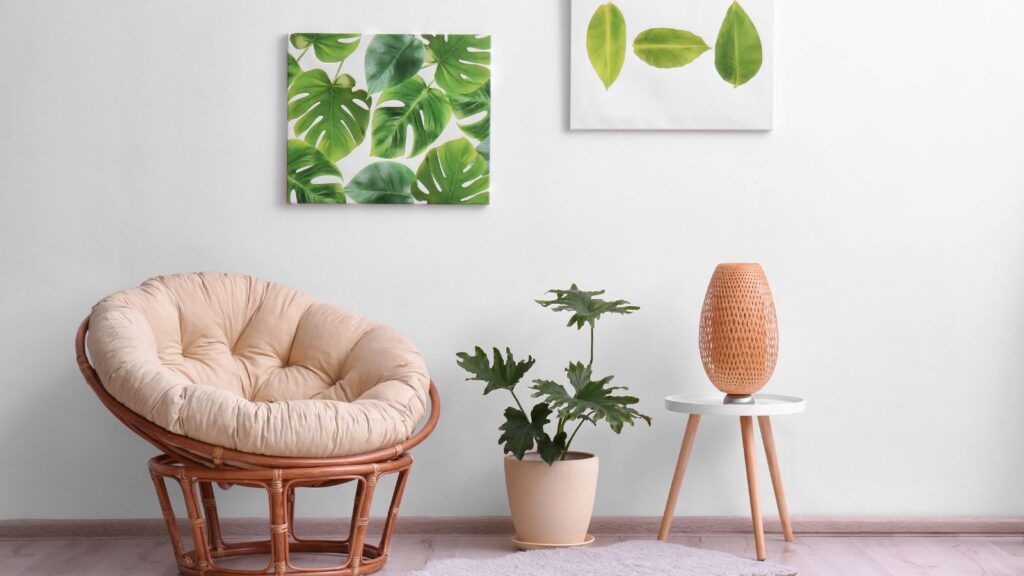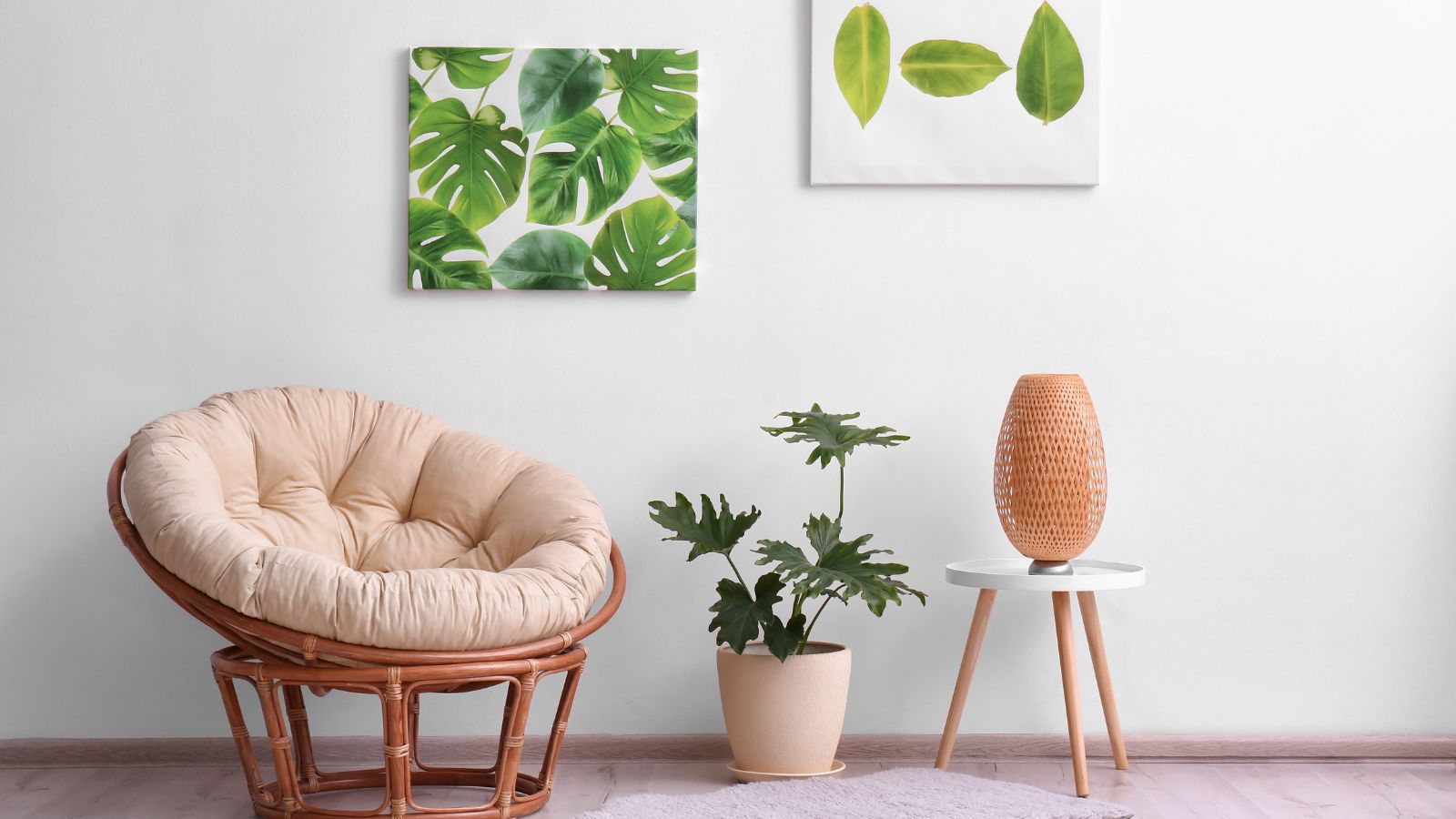Your room isn't a static thing; it becomes a living, breathing entity that reflects your personality with your favorite plants.
Plant room aesthetics are appropriate in many styles of houses and apartments, or even commercial space. We all LOVE those cafes, living rooms, bedrooms, or even bathrooms filled with plants.
Decorating a plant-themed room is no accessible business, but it can become a fantastic room with careful planning. This article will give you a step-by-step guide on how to decorate your home or office with plants.
Start with a white or neutral color scheme.

The most exciting aspect of a plant room is the decorator's choice of materials for the walls, furniture, fabric, and plant pots. Balance is essential in designing a room. Popular materials for a nature lover include wood (rattan, bamboo, bark, etc.), natural fiber (silk, wool, cotton, flax, hemp, jute, kapok, kenaf, moss, etc.), stone (flint, granite, obsidian, sandstone, sand, gems, glass, etc.) and native metal (copper, iron, gold, silver, etc.)…
Design a focal point first.
Plant room decor is a unique way to express your style. Having a focal point in your interior helps to make the room look more extensive and more organized. Start with decluttering, so the room looks more organized. Then decide on the main focus of the room, it can be one wall in front of your work desk, one wall that can be seen from your streaming camera, the bed of your bedroom, your desk with shelves filled with exotic plants, or a reading nook at the room corner.
Add a room theme and slowly integrate it.
Adding plants to your bedroom can be an easy way to make it look more stylish. You can pick a theme or base and choose things accordingly. The experts at Stylekawaii.com made a great post on all the famous pieces for plant room designs. Make sure to check it out and find ideas to copy!
Decide what types of plants to use at which area in the room.
You'll want to start by choosing the right plants for your space. Some plants grow best in direct sunlight, while others prefer partial shade, so you'll want to consider the lighting in each room. If you have low light in certain areas, consider using ferns or monstera plants, which thrive. You can also opt for succulents or cacti if you don't want to worry about watering them frequently.
Areca Palm (Dypsis lutescens) is an easy-care plant that will thrive in most indoor environments. It has long, feathery fronds that look wonderful when they cascade down from a hanging basket or tall pot on the floor.
Also, make sure to choose indoor houseplants that are safe for your pets.
Once you've found the perfect plants for your space and have researched how best to care for them (watering frequency and amount), it's time to start decorating!
Plan pot positioning as it is important for healthy plants.
Once you've chosen the types of plants that best fit your space, it's time to think about the plants' placement.
You can place larger potted plants on the floor or side tables for a more traditional look, but there are many other fun ways to utilize plant decor. For example, hanging plants from the ceiling is an increasingly popular way of displaying greenery and can give any room an airy feel. In addition, ceiling-hanging plants are easier to maintain than other plants.
Whether you're just looking for a hint of greenery or want to fully immerse yourself in an indoor jungle, putting plants on your walls is another great way to add color and life to your space without taking up valuable floor space. You can hang planters from command hooks or invest in some wall-mounted terrariums.
Hang plants from the ceiling.
Hanging plants are one of the best ways to bring some life into a room!
Plants are like the jewelry of home decorating—without them, your home can feel cold and lifeless. But by hanging a plant or two on your wall, you can instantly inject some personality into the room. We particularly love hanging plants because they can be arranged in all shapes, making them very versatile. You can even create an eye-catching centerpiece out of a hanging plant!
Hanging plants from the ceiling can add a feeling of light and space to a room and make it feel more welcoming. But, of course, if you don't want to drill into the ceiling, you can also hang plants on the wall.
Use wall-hanging containers for high ceilings.
On the other hand, if you want the visual appeal of a wall without the clutter, why not try a wall plant? Wall plants come in all shapes and sizes, so you're sure to find one that perfectly fits your decorating theme. And since these plants are typically mounted directly on walls, they can be placed anywhere you have space. So go ahead and put them in your basement or attic—there are no restrictions!
Adding plants to a wall makes it feel like nature grows even in the most unnatural spaces. It's also great for creating privacy while still letting in light. Ensure that you're using epiphytes, which grow without soil and use their roots only for support; these won't destroy your walls with roots looking for moisture and nutrients. Many tropical orchids fit this description, but there are others too!
Decorate the pots of your plant babies.
The pot of the plant also matters a lot. An attractive pool will enhance the decor of a room.
You could use macrame or other types of ropes/fabric to make hanging planters yourself or purchase pre-made ones online or at a local store near you!
Use a bunch of smaller plants instead of one big one.
Try putting small potted plants on shelves instead of vases full of flowers; this gives you some flexibility for future room replanning.
Grow indoor herbs to detox the environment and your body.
Living in an era prone to high pollutants and adulteration increases the risk of toxins in our bodies. Therefore, detoxing with homegrown herbs is an affordable and healthy choice because you are using natural, green products that do not have the harmful side effects of medicines.
All the time the body is at work, it cleans and shields us from insidious predators, whether through our digestive system, breathing, or skin absorption. The detoxification process enhances our essential and critical seven gateways: Kidney, Liver, Lungs, Bowel, Blood, Skin, and Lymph helping reduce the overload of toxins.
Plants make great roommates. Beautiful indoor plants such as jasmine or lavender give natural fragrance to your room. Growing herbal plants indoors helps us cope with stress and anxiety, add taste to our salad, and detox our bodies. They also purify the air and keep our homes clean.
Decorate the bed with plants.
There are many ways to use plants to decorate a bed in your bedroom. One way is to place a few plants in a vase on the nightstand. Or put a large plant in a pot on the floor near the bed. You can also let vine and ivy climb on your bed frame.
Plants add natural beauty and freshness to any bedroom. There are many different types of plants that can work well in any room, so it's essential to find one that matches the style of the room and the personality of the person who will be using it.
Dress up the nights with fairy lights.
You need these string fairy lights to have your home look pleasant and aesthetic.
String fairy lights can be a great way to add light and life to a room. They are easy to set up and can be used in many different ways. You can use them as part of a centerpiece or as an accent piece. You can also hang them in the curtain to dress up the window, wall, ceiling, or curtain around your bed. They are also versatile enough to use in any room in your home. A room with plants and lights guarantees a romantic and relaxing vibe for all nature lovers!

Comments are closed.